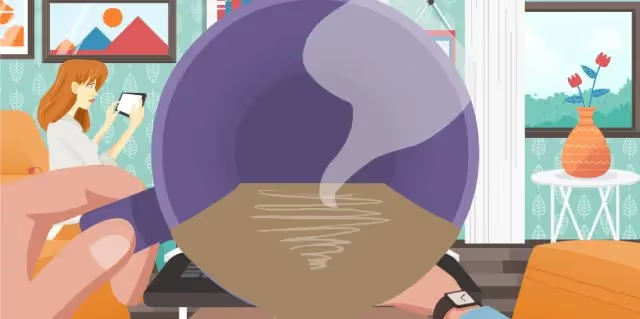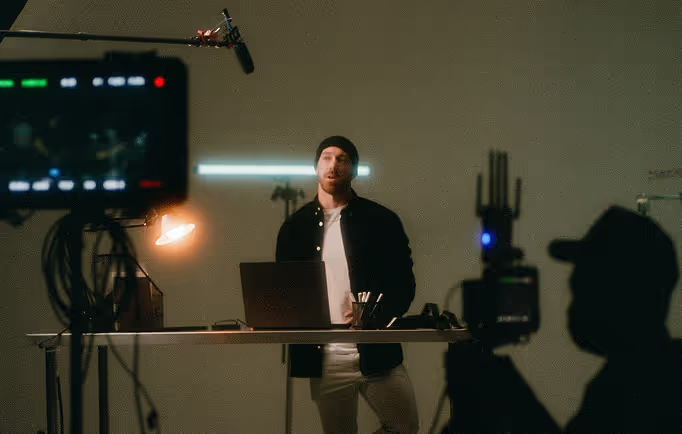How To Use Pacing In Your Explainer Animation

Ever notice how a lot of explainer videos keep a fairly bustling pace, right on the verge of what’s comfortable? Sometimes it’s like listening to someone who’s chugged a whole pot of coffee enthusiastically spilling out a string of interconnected ideas before the inevitable caffeine stomach gurgles hit.
On the other side of the fence are the ‘chill’ explainer videos, where a happy-go-lucky narrator gently talks you through the video, soft ukuleles in the background lulling you off to the safety of a remote Hawaiian island.
So what does your pacing say about your content? And how can your video achieve the right pacing for your brand?
1) use pacing to emphasise your customer’s need
Before production on your explainer video even begins your first step is to identify your customer’s need. Most of the time the specific customer problems we identify (e.g. How can I keep my company files secure? What if my breath stinks and I don’t know it? How can I manage my ridiculously busy schedule without wanting to crawl into a dark pit of nothingness and sleep forever?) fall into larger ‘need’ categories (e.g. security, social success, mental health). If the need carries a sense of urgency we can push that urgency with a faster pace, selling the idea that taking action is a positive move. But if urgency is the problem itself, as in the third example, then a slower pace can help pull the customer back from their tunnel of stress enough to see the solution in front of them, whatever your offered solution might be.
2) use pacing to match your brand’s personality
An online yoga instruction brand is likely going to have a very different personality to a Formula 1 racing school. Think long and hard about how pacing will affect the way your brand comes across, especially if your video is aimed at potential new customers or you’re looking to rebrand. A fast pace handled well can express excitement, action, innovation, and time-limitation, while a well-crafted slower pace can convey relaxation, peace, sentimentality, and a sense of comforting nostalgia. This video for Queensland Museum’s NASA ‘Pioneers’ exhibition could’ve easily slipped into the realm of ‘science and history must be slow and boring’, but the swift, whimsical music, the moving camera cuts, and the quick cuts between sound bytes instead give a great sense of innovation and achievement, hallmarks of the NASA brand.
3) build pacing to surprise the viewer
Building from a moderate pace to a faster pace can help act as a hook – as the momentum of your explainer video builds, curious viewers stick around to see where the action will lead to. ‘Breaking’ this building momentum toward the end of your video is equally important to give your viewer a sense of payoff and relief.
4) use unusually slow pacing to differentiate your video
Extra slow pacing is unusual in that it’s both fairly uncommon and creates a strong building of tension. Slow tension-building is especially effective when the viewer figures out what will happen next, then is hooked in to seeing the action play out.
5) play around with contrasting pacing
If you want to get creative, consider ways you can contrast your pacing in unique and compelling ways. One idea is to use fast-paced music with a slow-paced visual for comedic effect, like a high-octane techno track backing up an image of a snail race. Alternatively, throw my previous points out the window and use a pace that hits totally opposite to your message. This extreme contrast can be used in a tongue-in-cheek way (obnoxiously fast pacing to reflect how much the explainer character – and viewer – needs relaxation therapy in their life) or an affective way (a slow chilled-out pace setting up for a sudden tragic reveal, ala most Australian road safety videos circa mid 1990s to now).
6) techniques for pacing your explainer video
So we’ve talked about when and why we can use different levels of pacing, now let’s take a look at some basic techniques for how we can show it.
Lines: The direction of your visual designs can affect how fast or slow a video feels. Diagonal lines always carry a sense of dynamic movement, while horizontality is more associated with being grounded.
Shapes: Stick with ‘active’ shapes for a fast pace – triangles are especially dynamic as they’re made of sharp angles, while circles denote constant movement due to their lack of a ‘stopping point’. Conversely, squares are stoic and reliable, on point for a slower paced explainer.
Colours: Bright, strongly contrasting colours can come off as more energetic than a milder palette, while a slow, soothing video should stick to a calming colour scheme, likely one of the commonly accepted ‘balanced’ schemes which are naturally pleasing to the eye.
Cuts: How long you spend on each shot and the type of transition used will help set a particular tempo. A lot of quick cuts between shots denotes action and energy but risks disorienting the viewer with too much visual information. Longer shots give more gravitas to the current moment but can lose viewer attention if they drag on too long.
Music tempo: The literal tempo of the music in your explainer video will be the first hint of pacing for your viewers. Music for a fast-paced explainer about an exercise app will likely steer toward a heart-pumping BPM, while a meditation app’s video might tend more toward a moderate to slow pace of music.
Speaking tempo: The speaking style of your narrator (if any) also affects your explainer’s sense of pace. Speed isn’t necessarily the only factor here- we all know explainer videos are best when they’re short, but overly fast talking can leave viewers feeling stressed and missing out on information (if your narrator is at a blistering Gilmore Girls speed then you probably need to take your script back to the drawing board). A regular vocal rhythm and the right cadence can also help set an energetic pace with none of the rap-level incomprehension.
Start a






